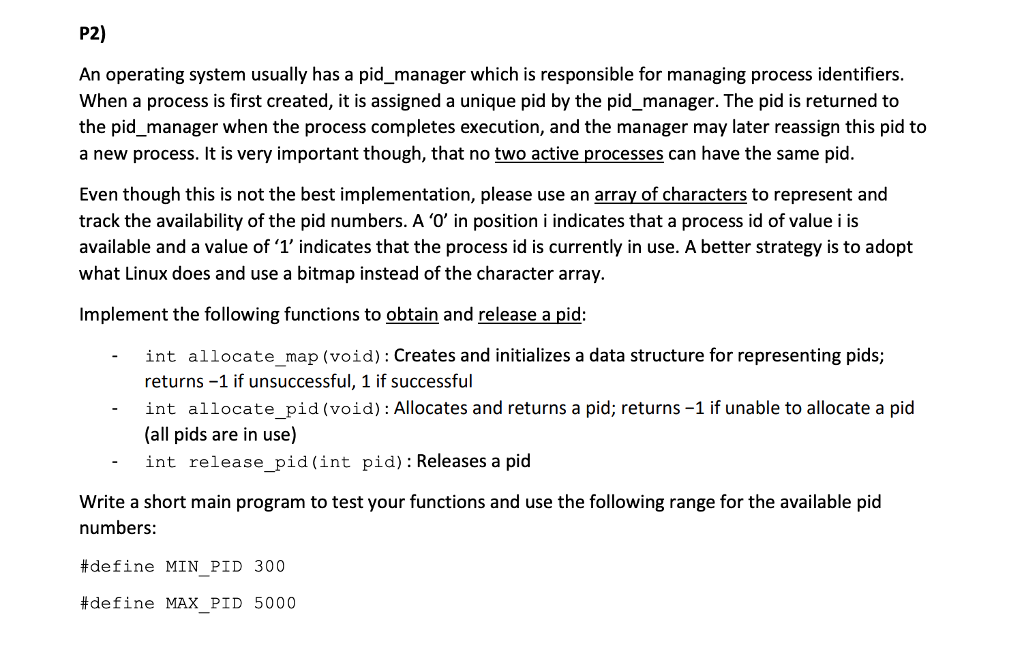
P2) An operating system usually has a pid_manager which is responsible for managing process identifiers. When a process is first created, it is assigned a unique pid by the pid_manager. The pid is returned to the pid manager when the process completes execution, and the manager may later reassign this pid to a new process. It is very important though, that no two active processes can have the same pid. Even though this is not the best implementation, please use an array of characters to represent and track the availability of the pid numbers. A '0' in position i indicates that a process id of value i is available and a value of '1' indicates that the process id is currently in use. A better strategy is to adopt what Linux does and use a bitmap instead of the character array. Implement the following functions to obtain and release a pid: int allocate_map (void): Creates and initializes a data structure for representing pids; returns -1 if unsuccessful, 1 if successful int allocate_pid (void): Allocates and returns a pid, returns-1 if unable to allocate a pid (all pids are in use) int release_pid (int pid): Releases a pid - - - Write a short main program to test your functions and use the following range for the available picd numbers #define MINPID 300 #de fine MAX PID 5000 - P2) An operating system usually has a pid_manager which is responsible for managing process identifiers. When a process is first created, it is assigned a unique pid by the pid_manager. The pid is returned to the pid manager when the process completes execution, and the manager may later reassign this pid to a new process. It is very important though, that no two active processes can have the same pid. Even though this is not the best implementation, please use an array of characters to represent and track the availability of the pid numbers. A '0' in position i indicates that a process id of value i is available and a value of '1' indicates that the process id is currently in use. A better strategy is to adopt what Linux does and use a bitmap instead of the character array. Implement the following functions to obtain and release a pid: int allocate_map (void): Creates and initializes a data structure for representing pids; returns -1 if unsuccessful, 1 if successful int allocate_pid (void): Allocates and returns a pid, returns-1 if unable to allocate a pid (all pids are in use) int release_pid (int pid): Releases a pid - - - Write a short main program to test your functions and use the following range for the available picd numbers #define MINPID 300 #de fine MAX PID 5000







